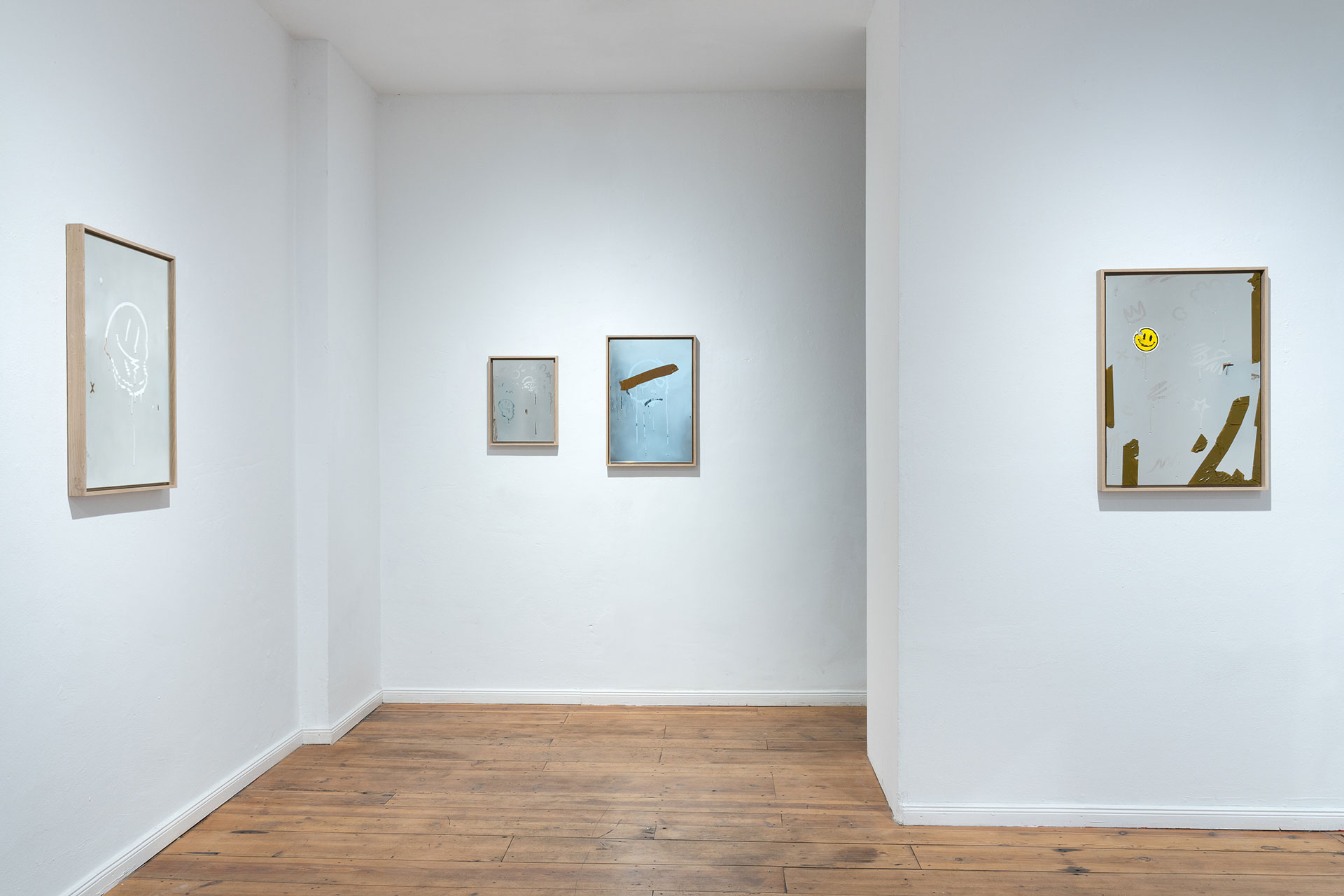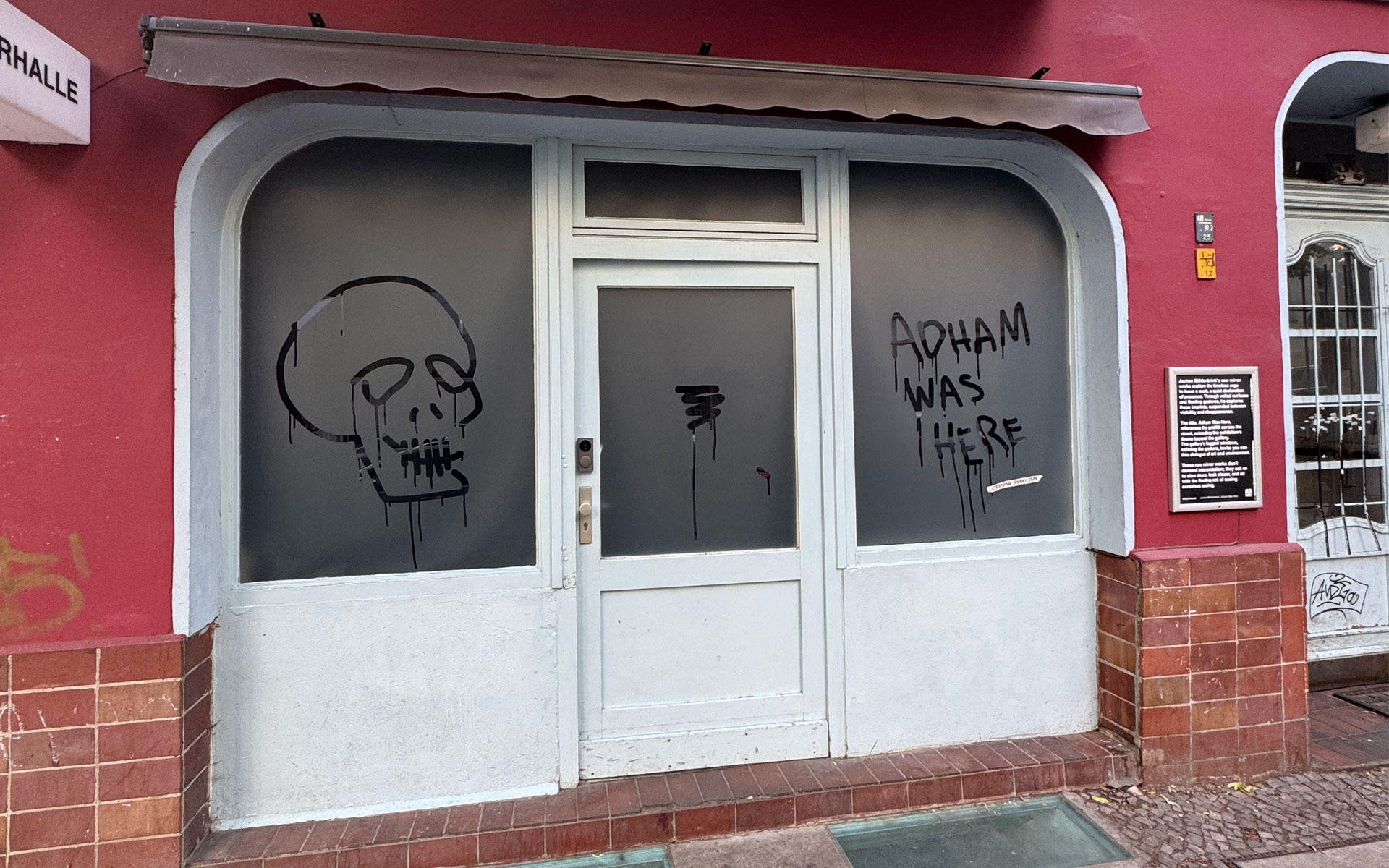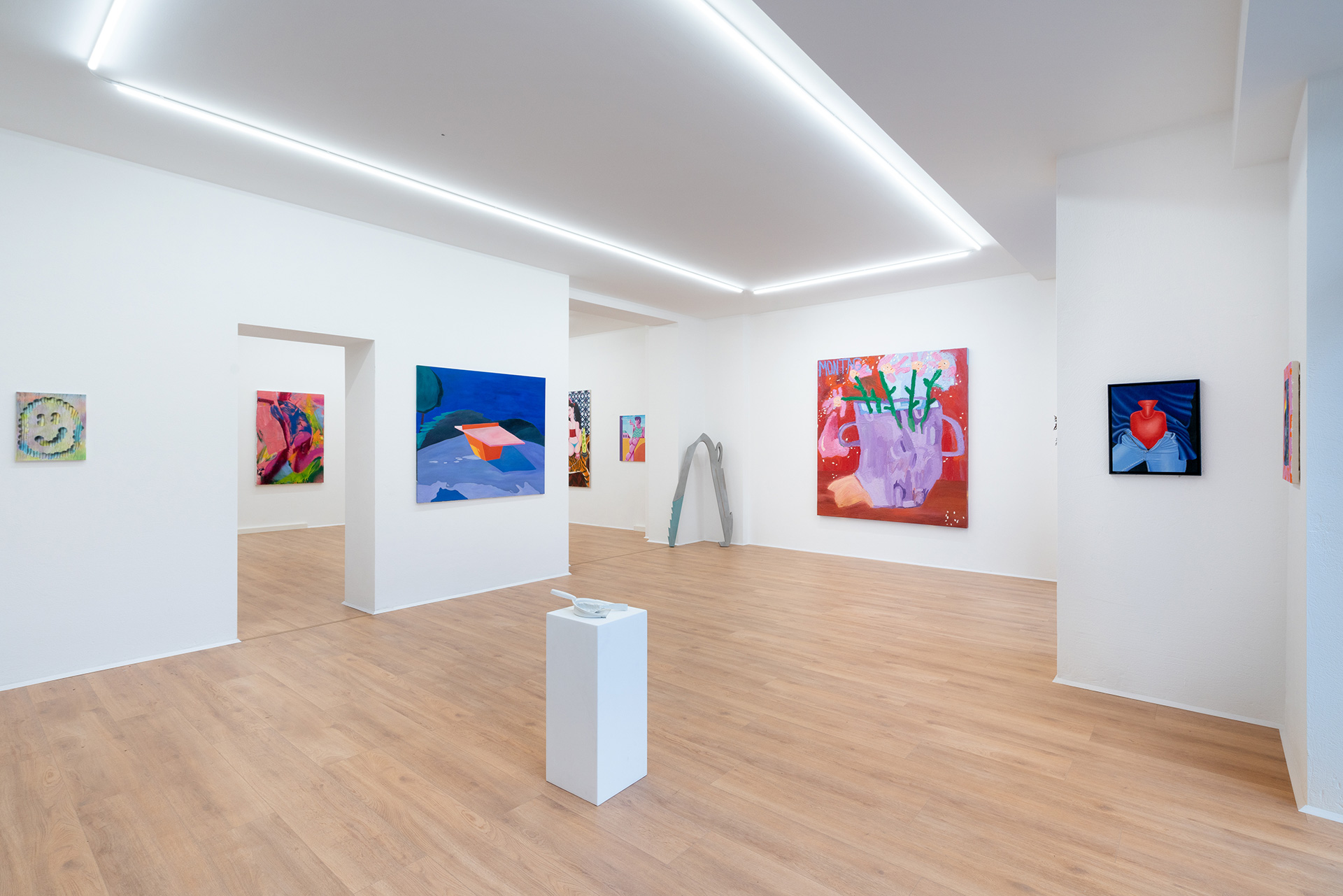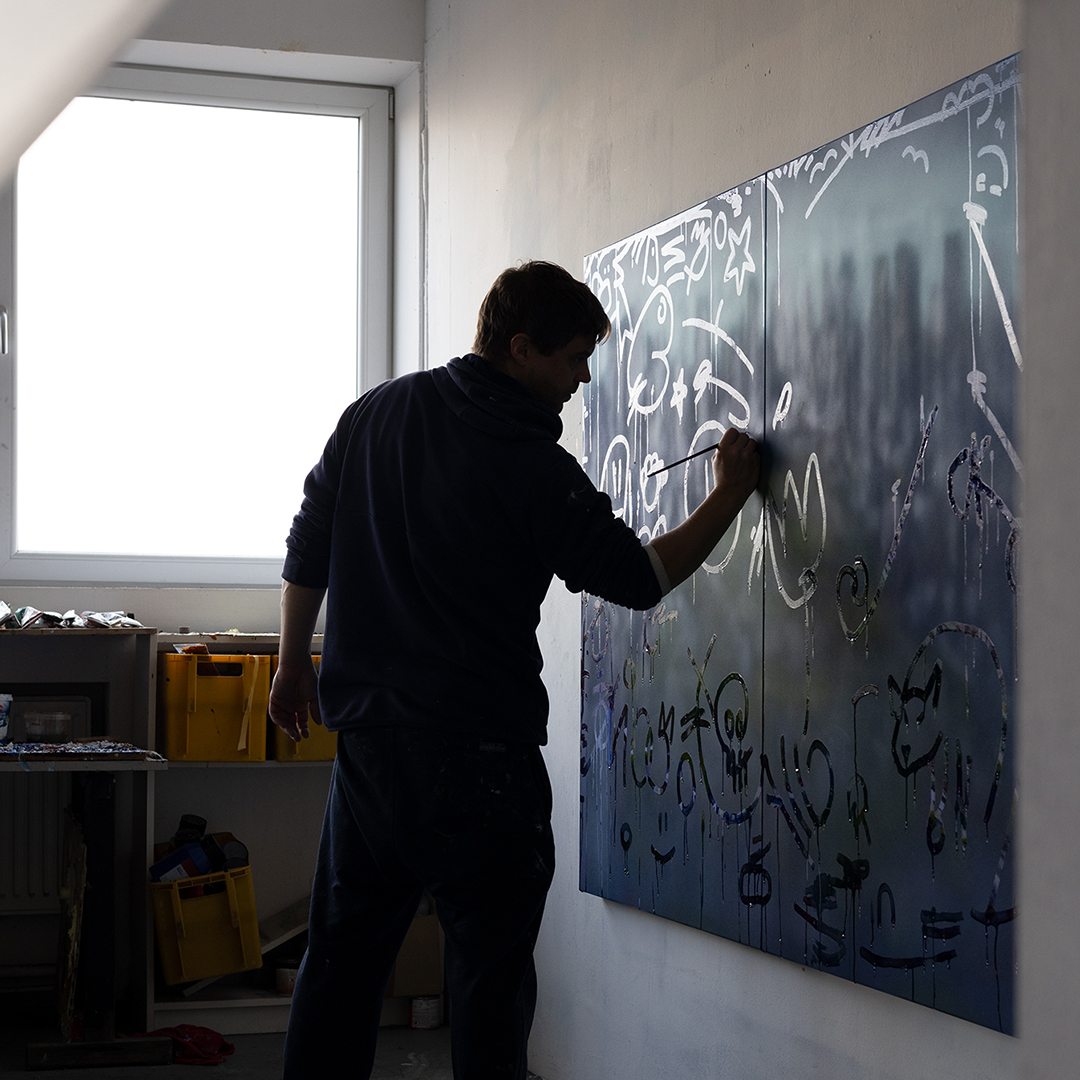
New Works on Mirror by Jochen Mühlenbrink
Weserhalle is pleased to present “Adham Was Here”, a solo exhibition of new mirror-based works by German artist Jochen Mühlenbrink, whose practice draws on the tradition of trompe-l’œil painting to explore perception, surface, and the shifting relationship between viewer and image.
At its core, his work returns to a simple, enduring impulse: to leave a mark, a quiet declaration of presence, however fleeting. From ancient cave drawings to a finger swiped across fogged glass, these gestures echo across time. They all say the same thing: I was here.
For this exhibition, Mühlenbrink works directly with mirror glass, applying soft, translucent veils of custom-blended resins that resemble condensation or mist. Onto these partially obscured surfaces, he introduces simple, deliberate marks; smiley faces, stick figures, smudges. Casual in appearance but carefully placed, these ephemeral gestures are rendered permanent: quiet imprints suspended between visibility and disappearance.
The exhibition begins before you enter. The gallery’s fogged front windows reveal a skull and the words “Adham Was Here,” as if traced with a finger. The gesture nods to a piece of graffiti just across the street — once a crude insult, now reframed as a ghost-signature. It folds seamlessly into the exhibition’s language of trace, illusion, and reflection.
While earlier works by Mühlenbrink used canvas to simulate fogged windows and the illusion of looking outward, these new mirror pieces turn the gaze inward. They confront the viewer with their own image, momentarily interrupted, inviting a pause.
In Mühlenbrink’s hands, illusion becomes a tool not for deception, but for stillness. The fog and marks on the mirror prompt us to consider what is revealed and what is obscured, what presence we leave behind, and what ultimately fades. These works don’t demand interpretation; they ask us to slow down, look closer, and sit with the fleeting act of seeing ourselves seeing.

Jochen Mühlenbrink (DE, 1980) studied painting at Kunstakademie Düsseldorf (2001-2006). Known for his Trompe-l’œil technique, Mühlenbrink leans on theories to investigate reality within the aesthetic principles of modernist painting and classical art. Since 2005 his work has been exhibited in galleries and institutions in Germany, across Europe, in Asia and North America.

